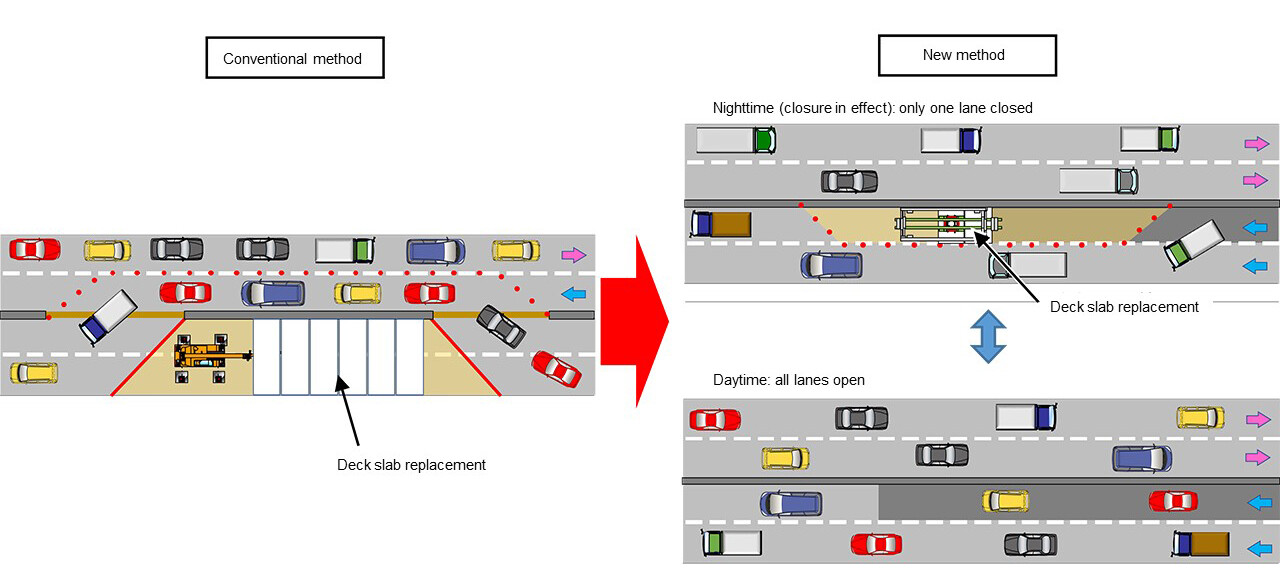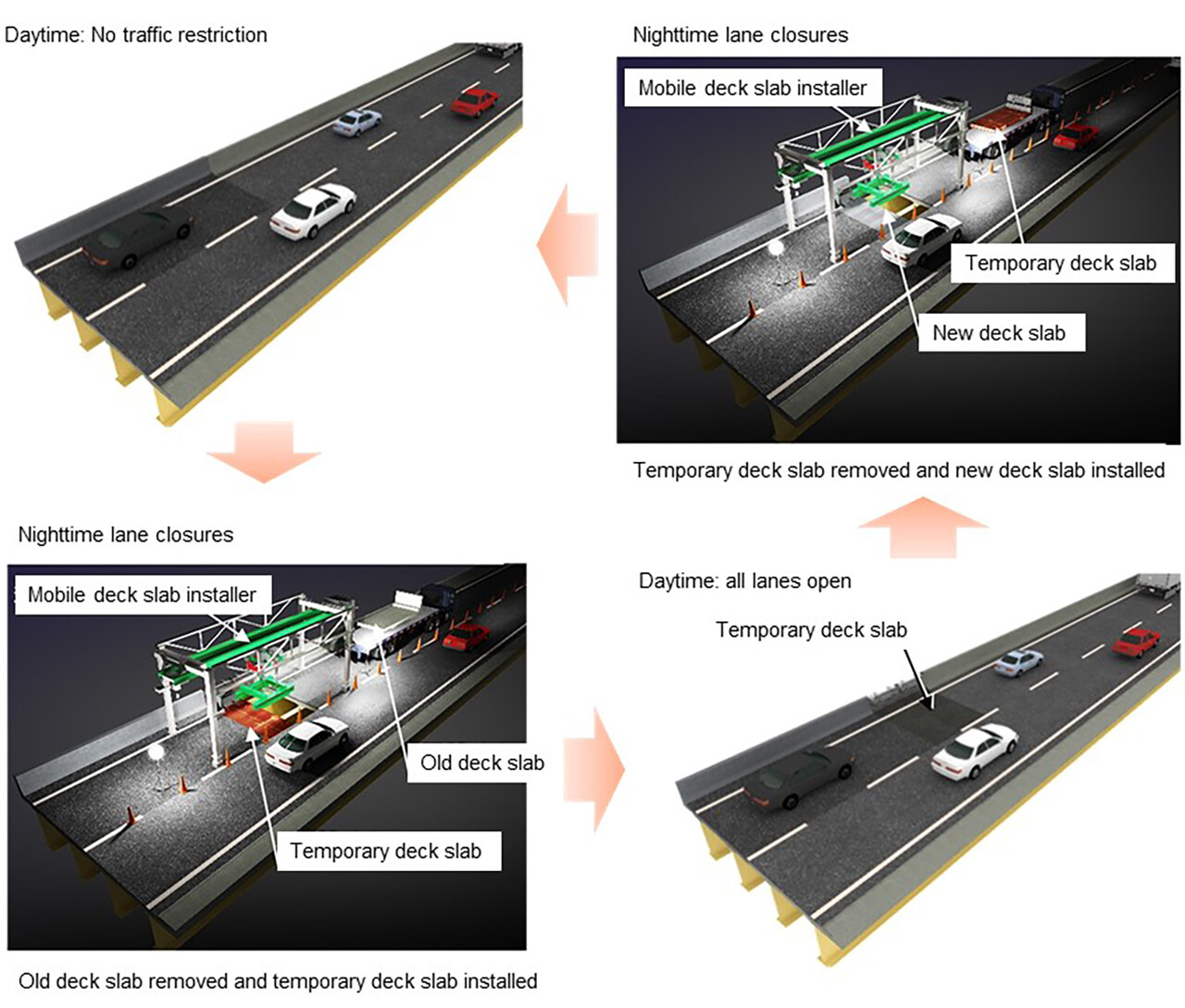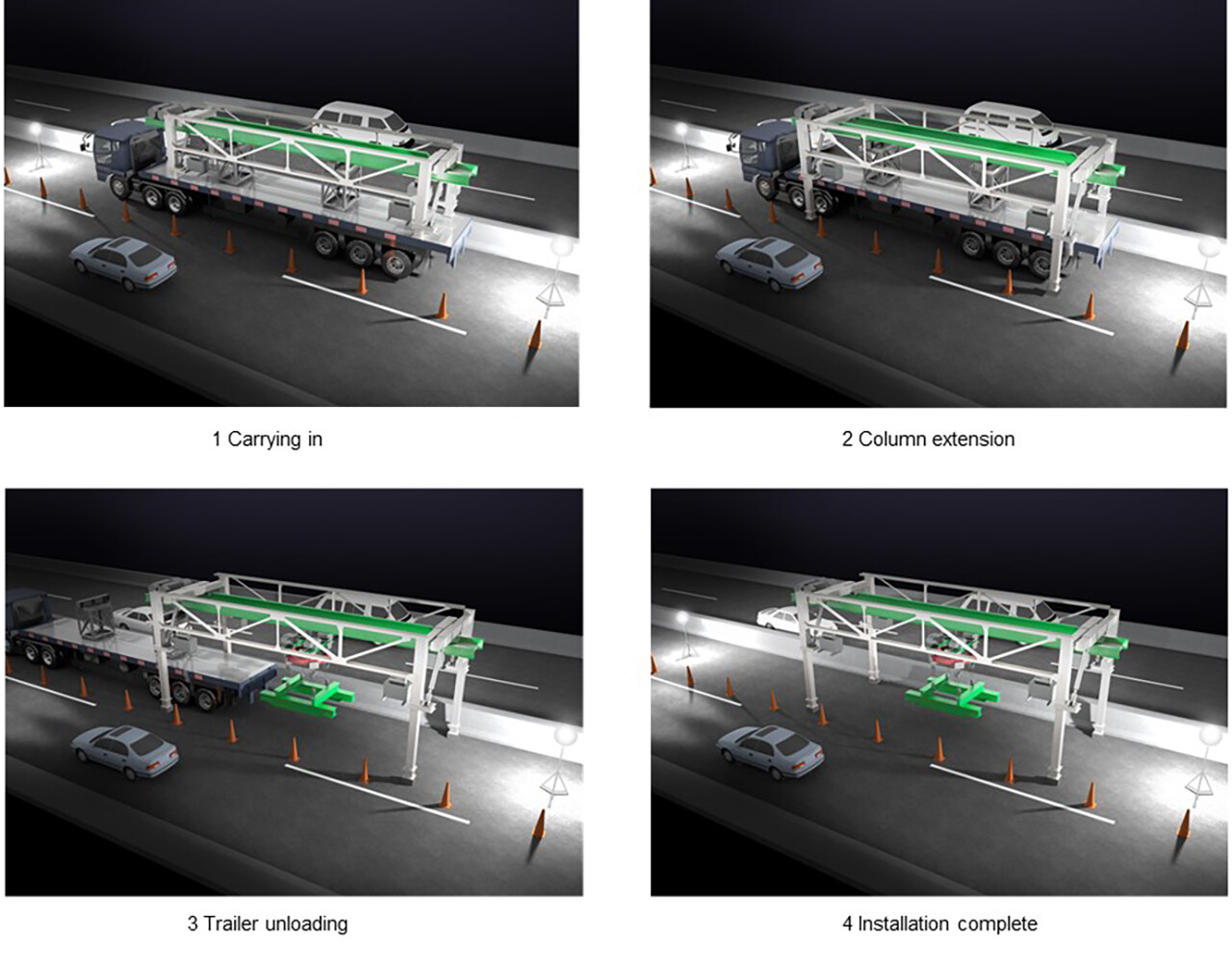New Deck Slab Replacement Method DAYFREE™ to Reduce Traffic Congestion Developed and Deployed
Replacement of the deck slabs on high-traffic routes was accomplished by minimizing lane closures to nighttime only
-
Civil Engineering
In collaboration with the Central Nippon Expressway Company Limited, Obayashi Corporation has developed the DAYFREE deck slab replacement method to reduce traffic congestion during bridge renewal work by requiring lane closures only at night when traffic volumes are low. The method was used for deck slab replacement work ordered by the Central Nippon Expressway on the Yumifuri River Bridge (inbound lanes) on the Chuo Expressway.

In expressway bridge renewal work, once construction begins, the bridge will be restricted to two-way traffic by closing one of the inbound or outbound lanes until the removal and installation of deck slabs on the bridge girders are complete. There are measures to maintain the current number of lanes by using temporary bridges as an alternative route, but in urban areas, traffic closures are unavoidable due to the difficulty of securing sufficient land, and the duration of the closure must be kept as short as possible.
Obayashi and the Central Nippon Expressway have developed DAYFREE, a construction method that divides the construction steps of deck slab replacement work into separate steps and allows construction with lane closures only at night when traffic volumes are low. DAYFREE uses Highway Strider™, a mobile deck slab installer developed by Obayashi for half the width of the road (one of two highway lanes) that can be carried on a trailer, and Slim NEO Plate™, a precast panel made of SLIM-Crete® that is installed at the joints between deck slabs, to remove old deck slabs, replace new ones, and resurface the road in a limited amount of time. Because the closures can be released during the day when traffic is heaviest, they also reduce traffic congestion during renewal work in urban areas where tens of thousands of vehicles pass through each day.
The features of DAYFREE, Highway Strider, and Slim NEO Plate are as follows.
Construction work with traffic closures only during nighttime by dividing construction into separate steps
Conventional deck slab replacement work involved the following five steps as a cycle: removing old deck slabs, cleaning steel girders, installing new deck slabs, casting concrete for deck slab joints, and waterproofing/paving, which continued day and night, requiring several days of traffic closures before each cycle was completed.
With DAYFREE, the old deck slabs are removed and temporary deck slabs are installed while one lane is closed at night when traffic is light, then the road is temporarily reopened to traffic. After the following night, the top surface of the steel girders is cleaned, the temporary deck slabs are removed, and the new precast PC deck slabs are installed in sequence. These work processes are repeated as a cycle to complete the deck slab replacement work. During the cycle, the temporary deck slabs are in place and open to traffic during the daytime to allow vehicles to pass through unimpeded.

Dedicated mobile deck slab installer enables construction with only half the width of the road occupied
Conventionally, large cranes have been used to remove and install deck slabs, but these cranes take time to set up and cannot be used for constructions with one-lane closed because they do not fit into half the width of the road. The newly developed mobile deck slab installer (Highway Strider), which is specially designed for half the width of the road, is a gantry type crane whose columns can be extended and retracted vertically and horizontally. After it is trailered to the site, it can be installed automatically and quickly by extending the columns to fit half the width of the road, and when it is time to remove it, the columns can be retracted in the same manner to load it back onto the trailer.

Development of joints that allow daytime opening
In order to open the lane to traffic, the joints between the deck slabs must have the required strength, and in conventional reinforced concrete structures, this takes at least 2 to 3 days after the concrete is casted. To solve this problem, we developed the Slim NEO Plate, which enables rapid opening to daytime traffic by installing factory-made precast plates at the joints of the deck slabs using SLIM-Crete, an ultra-high-strength fiber-reinforced concrete cured at a normal temperature.
Because the Slim NEO Plate itself has high strength, you can move on to waterproofing and paving as soon as it is installed. In addition, the voids on the underside of the plate can be filled with SLIM-Crete from the underside of the deck slab while sharing the road, ensuring quality and long-term durability.

By using DAYFREE and other technologies developed this time for slab replacement work, Obayashi will reduce the duration and frequency of traffic restrictions associated with expressway renewal work, and contribute to extending the service life of transportation infrastructure.

